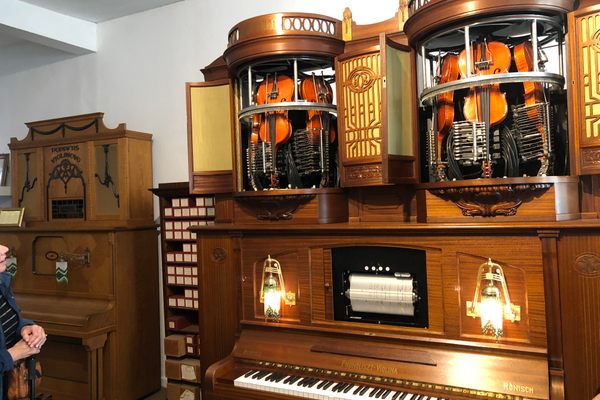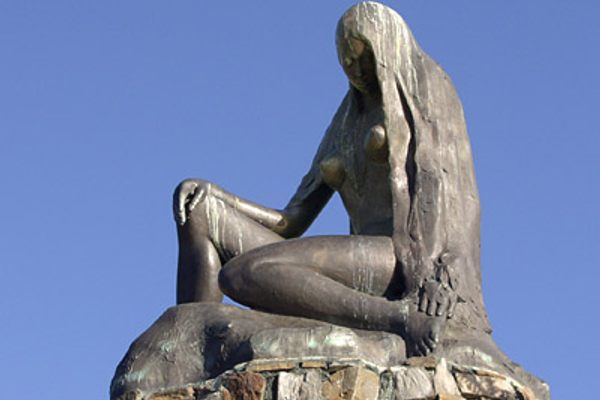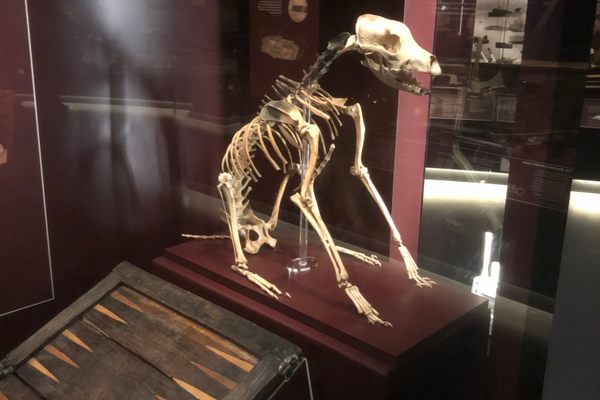“And in at the windows, and in at the door, And through the walls by thousands they pour, And down from the ceiling, and up through the floor, From the right and the left, from behind and before, From within and without, from above and below, And all at once to the Bishop they go.
“They have whetted their teeth against the stones, And now they pick the Bishop’s bone; They gnaw’d the flesh from every limb, For they were sent to do judgment on him.”
This diminutive toll tower near the town of Bingen is most famously the setting of a grisly cautionary tale from the middle ages.
According to legend, Bishop Hatto II, Archbishop of Mainz was a cruel and selfish ruler, responsible both for the collection of tolls along the Rhine as well as the distribution of food. When famine struck Germany, the townspeople found themselves starving, and they plead with the Archbishop to give them more food from the storehouse. In response, he invited them all to come into the storehouse, and take all the food they could carry. But once the townsfolk were inside the storehouse, he barricaded the doors, and set the place ablaze, remarking to his conspirators that their screams of anguish were comparable to the squeals of rats.
That evening the Archbishop returned to his mansion to feast in peace and celebrate his solution to the famine. When he woke the next morning, he found that his portrait had been eaten out of its frame by rats. Then news came that a swarm of rats had descended on local farmland and then the storehouse and eaten everything in sight. As he looked out from his window, he saw the army of rats headed straight for him, and he fled to his island tower, where he barricaded himself in for the night. He awoke to the sounds of his cat:
“He listen’d and look’d—it was only the cat; But the Bishop he grew more fearful for that, For she sat screaming, mad with fear, At the army of rats that were drawing near.”
The rats had taken to the water, swimming to his island tower. In the end, the cruel man is devoured by rats, in a sort of (sadly, totally apocryphal) poetic justice.
In reality, the Mouse Tower, in German: “Mäuseturm”, is one of many Rhine River toll stations, built in the middle ages as one part local taxation, one part of an elaborate extortion scheme. The name “Mäuseturm” is a corruption of the original name “Mausheturm”, meaning “toll tower”. Those in control of the towers were widely reviled for abusing their positions of authority and extracting unsanctioned fees from passing boats, and were even accused of outright piracy, kidnapping, and even of stealing entire ships.
The Mouse Tower has had buildings of some sort on the location since Roman times, but the current tower dates to the 13th century, with major restorations into its current neo-Gothic appearance in the mid 1800s.
Although there does not appear to be any literal truth to the legend, Archbishop Hatto II was a real man who by all accounts has had his name dragged through the mud undeservedly. Truth aside, over time the legend became firmly attached to the tower. The story became well known with the publication of the Curious Myths of the Middle Ages compiled by Sabine Baring-Gould, a Victorian scholar.
Baring-Gould pointed out many of the motifs in the legend are common to German folklore and art, wherein the mouse is often a symbol of the soul. Also, it seems that the fate of being devoured by mice or rats was not uncommon. Other places throughout Europe are associated with similar stories, particularly where a picturesque tower is surrounded by water.
The popularity of such stories says something about the intimate relationship between people in the middle ages and swarms of hungry rodents, as well as concerns about famine and rapacious noblemen.
The Mouse Tower is close to the towns of Bingen am Rhein and Rüdesheim am Rhein. The tower is part of the UNESCO World Heritage Site Upper Middle Rhine Valley. It is open only by special appointment.
Know Before You Go
Easily seen from the town of Bingen am Rhein, or from the Rhine river.



















Follow us on Twitter to get the latest on the world's hidden wonders.
Like us on Facebook to get the latest on the world's hidden wonders.
Follow us on Twitter Like us on Facebook